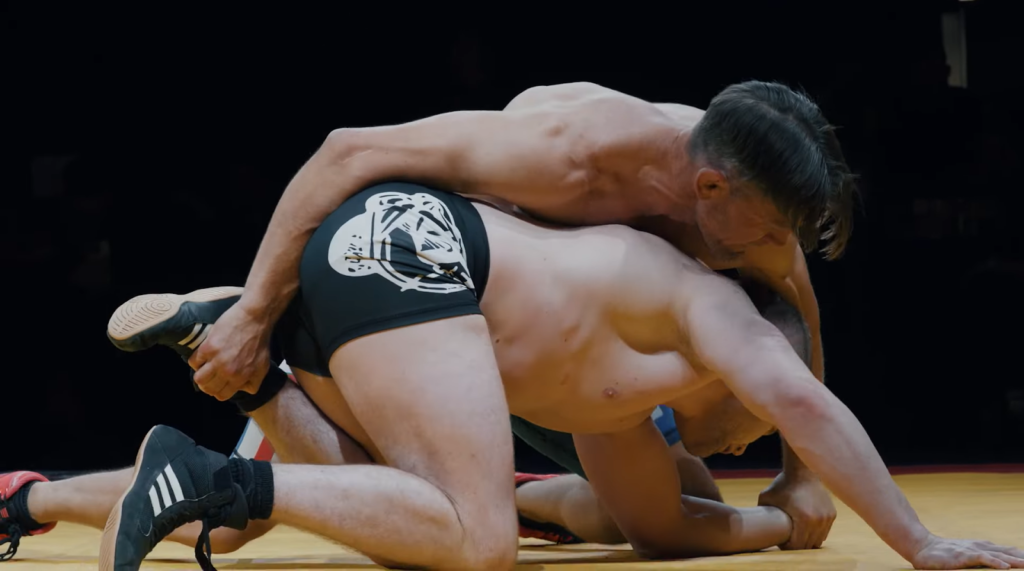The world of professional wrestling, embodied by the WWE (World Wrestling Entertainment), is a realm of athleticism, drama, and intense competition. Central to this spectacle is the iconic wrestling ring—an arena where larger-than-life battles unfold.
Have you ever wondered: What is the WWE ring made of? In this exploration, we’ll unravel the construction, materials, and components that contribute to the creation of this stage where wrestlers strive for victory and entertain audiences worldwide.
The Foundation: The WWE Ring Frame
Sturdy Steel Frame
At the core of the WWE ring’s construction lies a sturdy steel frame that forms the foundation. This frame is responsible for supporting the entire structure, including the canvas, ropes, and athletes themselves. The steel frame is meticulously designed to withstand the tremendous forces exerted during matches, ensuring the safety of the wrestlers and providing a stable platform for their performances.
Load-Bearing Beams
Supporting the steel frame are load-bearing beams strategically placed to distribute weight evenly across the ring. These beams contribute to the ring’s structural integrity, ensuring that it can accommodate the physical demands of high-impact maneuvers and intense matches.
Canvas Material
The canvas is the surface upon which the wrestlers compete. It’s not your typical canvas; instead, it’s a specialized fabric that strikes a balance between durability and comfort. This fabric is designed to withstand constant grappling, falls, and strikes while providing enough give to absorb impact and protect the wrestlers.
Padding and Cushioning
Beneath the canvas, padding, and cushioning are strategically placed to provide a layer of protection for the wrestlers. This padding minimizes the impact of falls and high-impact maneuvers, reducing the risk of injury during intense matches.
Learn who build WWE Ring and more, join this video
The Ropes: Boundaries and Bounce
- Sturdy Ropes. The ropes enclosing the WWE ring serve multiple purposes. They define the boundaries of the wrestling area and provide a surface for wrestlers to interact with during matches. These sturdy ropes are reinforced with steel cables to ensure they can withstand the force of wrestlers leaning, bouncing, and being propelled off them;
- Tension and Bounce. The tension in the ropes is carefully calibrated to strike a balance between providing a solid surface for moves and creating the characteristic bounce that adds an element of spectacle to wrestling matches. The ropes contribute to the dynamic nature of matches, enabling wrestlers to execute high-flying maneuvers and rebounds off the ropes.
The Turnbuckles: Functional and Aesthetic
Steel Turnbuckles
The turnbuckles are the corner posts of the ring, and they play both a functional and aesthetic role. These steel posts are crucial for attaching the ropes and maintaining their tension. Additionally, they serve as anchor points for wrestlers to interact with during matches, whether it’s for leverage, executing moves, or scaling the ropes for high-flying stunts.
Cosmetic Pads
To enhance safety and aesthetics, cosmetic pads are often wrapped around the turnbuckles. These pads provide a degree of cushioning in case wrestlers collide with the corners of the ring. They also contribute to the visual appeal of the ring, showcasing the WWE’s branding and creating a polished look.
Enhancing the Experience: Additional Components of the WWE Ring
Apron and Skirt
The apron and skirt of the WWE ring are often overlooked components, but they play a vital role in the overall setup. The apron is the area that extends beyond the ropes, serving as a transition zone between the ring and the floor. It’s a crucial space for wrestlers to interact with and execute maneuvers on the outside of the ring.
The skirt, on the other hand, provides a neat covering for the space beneath the ring, concealing the structural elements and adding to the ring’s aesthetic appeal.
LED Apron Graphics
In modern WWE productions, the apron takes on an additional visual dimension through LED apron graphics. These high-tech displays showcase dynamic animations, wrestler entrances, and branding, adding an immersive visual element to the matches. LED apron graphics are a testament to the WWE’s commitment to innovation and enhancing the viewer experience.
The Mat: Wrestling’s Theatrical Stage
- Thick Mat Layer. Beneath the canvas lies the mat, a layer designed to provide some cushioning while maintaining a solid and consistent surface. The mat’s thickness is carefully calibrated to ensure that wrestlers can execute moves safely without sacrificing the tactile connection required for grappling and performing holds;
- Iconic WWE Logo. The WWE mat often features the iconic WWE logo prominently displayed at its center. This logo not only adds to the visual spectacle but also reinforces the branding and identity of the WWE. When wrestlers stand in the center of the ring, they stand on the symbol of sports entertainment’s most recognizable brand.
Ring Posts and Turnbuckle Pads
Ring Posts
Completing the structural setup of the WWE ring are the ring posts. These vertical posts are strategically positioned at each corner of the ring, providing support for the ropes and turnbuckles. They are essential for maintaining the ring’s structural integrity and ensuring the safety of the wrestlers during high-impact maneuvers.
Turnbuckle Pads
In addition to cosmetic pads, turnbuckle pads are often placed over the steel turnbuckles. These padded covers add another layer of protection for the wrestlers who may come into contact with them. Turnbuckle pads are designed to mitigate the risk of injury while maintaining the visual aesthetic of the ring.
Conclusion
The WWE ring is more than just an arena—it’s a testament to craftsmanship, innovation, and the fusion of athleticism and entertainment. Every component, from the steel frame to the canvas, ropes, and turnbuckles, is meticulously designed to uphold safety, withstand rigorous competition, and contribute to the visual spectacle that captivates audiences worldwide.

As you watch your favorite WWE superstars step into the ring, you’re witnessing the culmination of engineering, creativity, and passion—a stage where dreams are pursued, rivalries are settled, and legends are born.